
TGR Journal Vol. 4
Dialing In An Approach to Risk With The Bridger-Teton Avalanche Center
Story by Max RitterWho knew that avalanche forecasters were so in tune with the snowpack that they had descriptions for the way snow sounds when it hits the ground? According to Gabrielle Antonioli and Aaron Diamond, when graupel falls out of the sky, it sounds like sizzling bacon. Although that might sound weirdly delicious, to these two, it’s a red flag.
It’s the end of March 2023 in the Tetons, and we’ve had anything but a normal season. While the calendar might say it’s officially spring, it’s still snowing hard and the snowpack looks like mid-winter at all elevations. Despite the soothing sound it makes, that graupel falling to the ground has strong potential to turn into yet another weak layer that could create avalanche activity. While we hadn’t seen any major avalanche events in days, the Tetons had seen one of the most continuously snowy winters in recent history. There’s more snow in the forecast. Someone had turned the snow faucet on and it was just dripping and dripping away, adding a few inches here and a few inches there. Luckily, that never-ending snowy period made for spectacular skiing conditions, but it still kept Antonioli and the other forecasters from the Bridger Teton Avalanche Center on edge. With weak layers buried deep in the snowpack this late in the season, would we reach the tipping point?
On a morning tour up Angle Mountain on Togwotee Pass, Antonioli and her riding partner Aaron Diamond (a local AMGA splitboard guide) pause to take some observations at the West Angle weather station. These include snowfall totals, snow water equivalence measurements, temperature, and other atmospheric data - all which will be incorporated alongside some snowpit tests into tomorrow’s forecast.
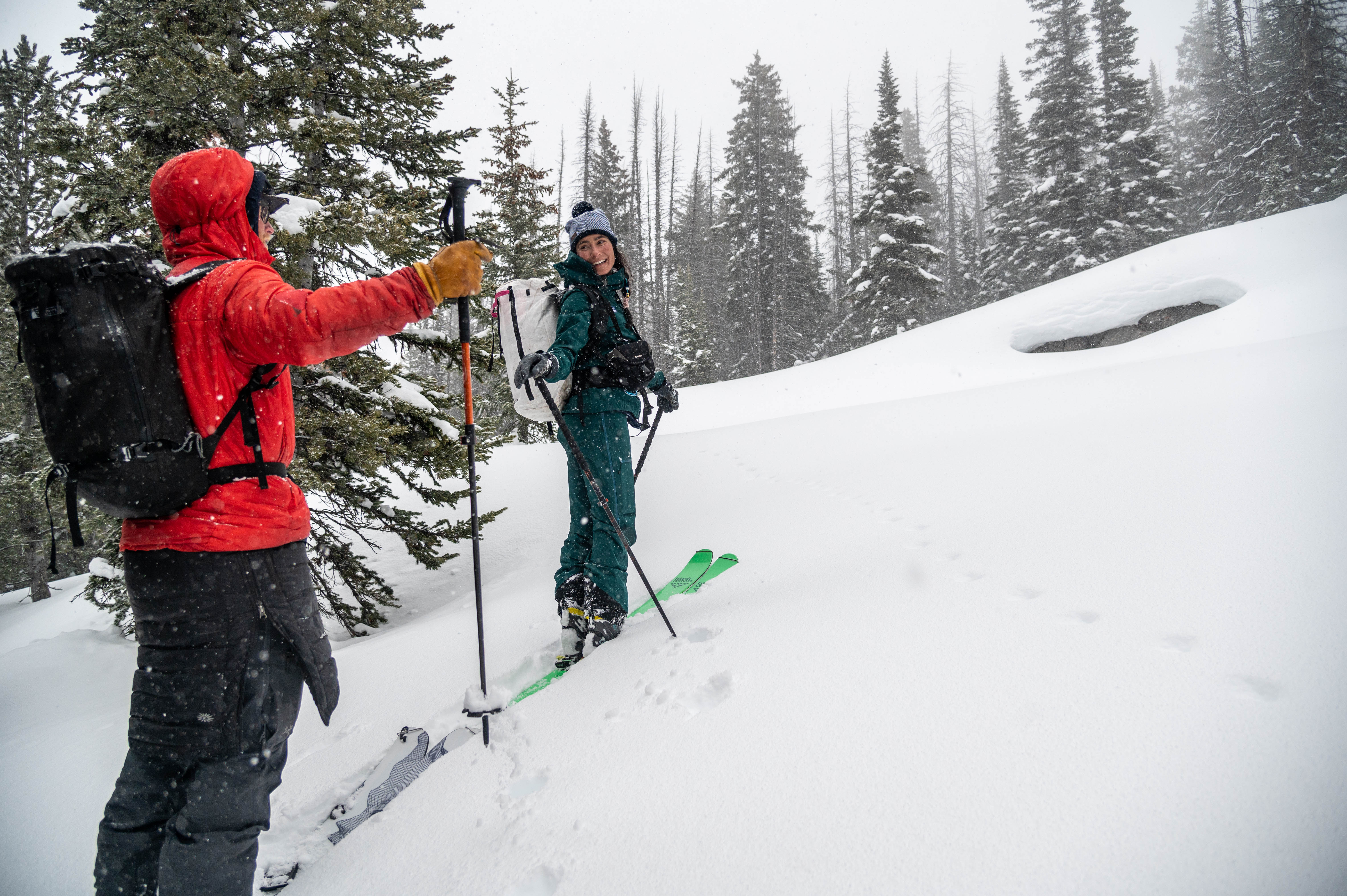
Avalanche forecasting is a complex science, but to the Bridger Teton Avalanche Center’s new forecaster Antonioli, it’s more of an art form. A native of Butte, Montana, Antonioli has dedicated her professional career (and much of her personal time) to skiing, although as she puts it, she’s not a professional skier, merely a “skiing professional.” Her motivations to pursue a career in guiding and snow science came from a few places, including the simple fact that she wanted to ensure her own skiing’s longevity after tragically losing a few too many friends to the mountains.
“I really wanted to go to med school, but then life stepped in. A friend died in a cornice-collapse accident, I re-evaluated what made me happy, and things cascaded from there. After a while, I became more fascinated with the process and relationship with snow than with accomplishing skiing goals,” Antonioli says, “They work hand-in-hand, but in my younger years, I skied more consequential things without a full understanding of the risk I was taking on. There was more send and less strategy behind my process. Due to the deaths of friends in the years following that in avalanches in Bozeman, I became really interested in understanding my margins and the margins of my partners and how to manage risk in the mountains.”
After being exposed to a mountaineering mentorship in Bozeman and fostering a good relationship with the local avalanche center by providing observations in return for feedback, Antonioli decided she wanted to pursue a career in snow. She volunteered as a patroller at Bridger Bowl for a season to gain experience, and taught avalanche courses and ski guided for Montana Alpine Guides to build a resume.
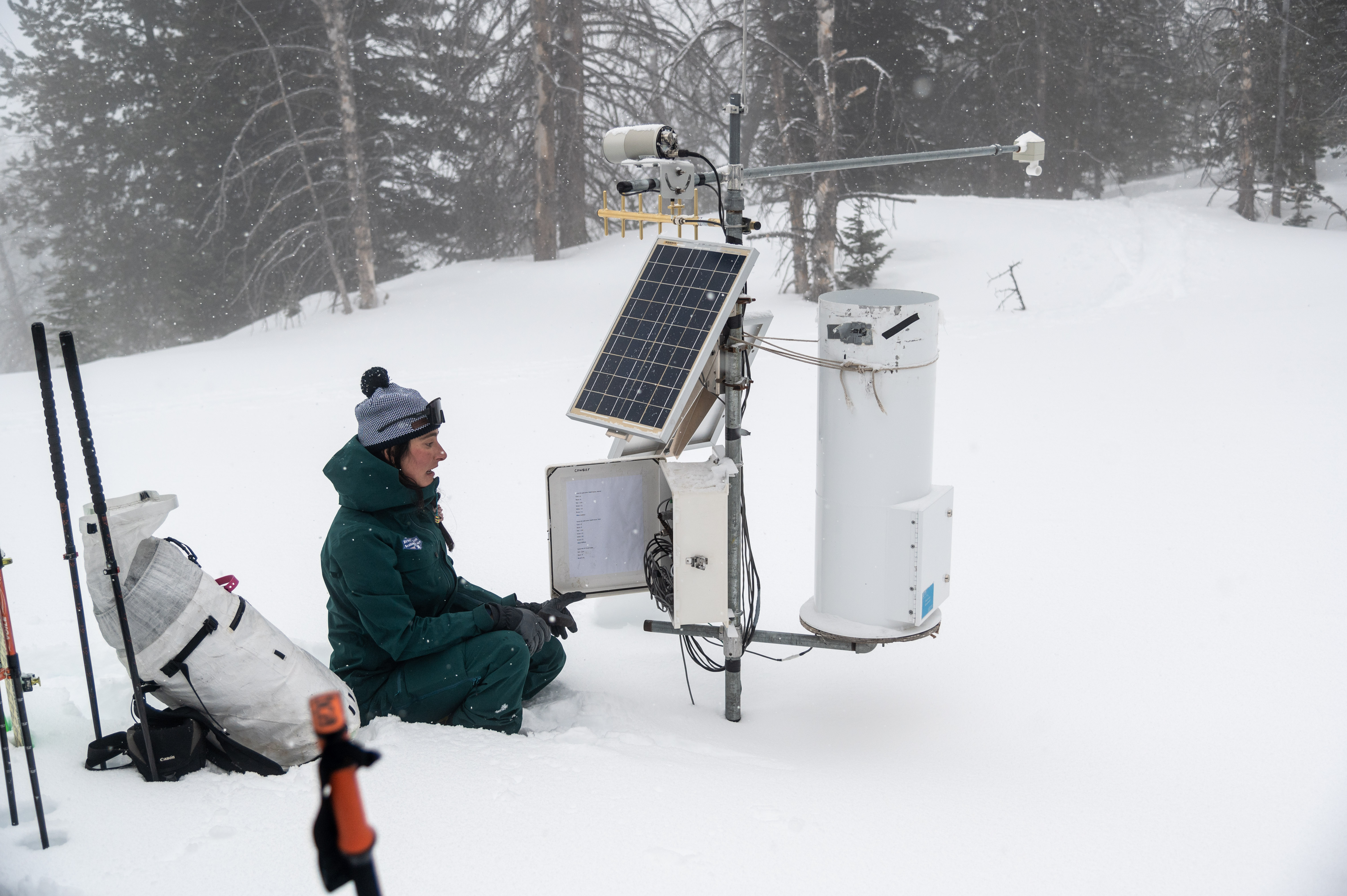
As one of the birthplaces of ski mountaineering in North America, the Tetons are notorious for some of the gnarliest riding south of Alaska - big steep lines that are covered in deep, fluffy powder snow for most of the winter. In a nutshell, we’re in a lucky geographical spot where we get what’s considered an inter-mountain snowpack, a combination of the cold, dry, and shallow continental snowpack (think Colorado) and a super-deep and wet maritime snowpack (think PNW). For skiers and snowboarders, that snowpack, in combination with the world class terrain on offer, often opens up opportunities to ride big lines and deep snow - but also requires a keen understanding of what’s going on beneath our feet.
Back up on Angle Mountain, Antonioli and Diamond have selected a sheltered north-facing spot to dig a snow pit and perform some stability tests. Diamond, a long-time guide in the area, knows these mountains like the back of his hand - something Antonioli greatly appreciates when out skiing together. It makes navigation and choosing snowpit locations that much faster when someone knows every little ridgeline. They stand in a safe spot on top of a tasty looking steep north-facing powder run and start digging. Immediately, they find what they expected to: concerning weak layers in the snowpack that would make the slope avalanche prone. Investigating further, they opt to perform an Extended Column Test and a Propagation Saw Test - two ways to check the strength of a weak layer and the likelihood that it will cause a slide.
Historically, the Bridger Teton National Forest’s avalanche center (BTAC) has provided a daily forecast for three zones (Tetons, Togwotee Pass and the Grays/Snake River Range) from mid November through mid April. This forecast distills snowpack and weather observations into a daily hazard rating for winter backcountry travelers in one of the most complex mountain ranges in the Lower 48. It’s used every day by everyone from skiers exiting the gates of Jackson Hole Mountain Resort, to ski mountaineers in the high peaks of the Tetons, to snowmobilers on Togwotee Pass and in the southern ranges. This year, the BTAC website got a major update to bring it up to par with a handful of other avalanche centers in the country. While a host of new features were added to make data more accessible, the basic information provided remained the same - and none of that information could be made public without the tireless effort of the BTAC’s team of forecasters.
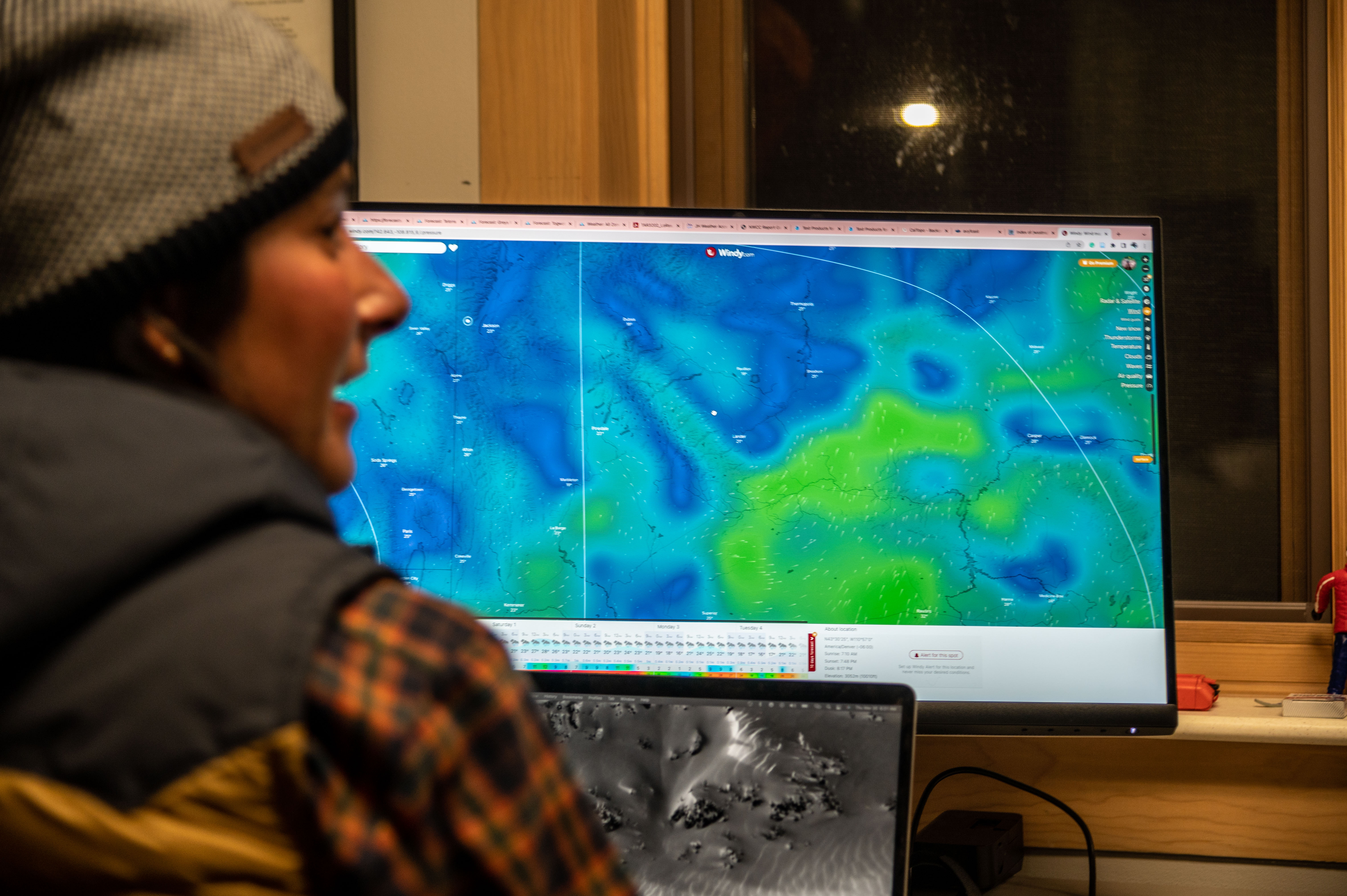
While the forecast has provided vital information for years, one thing many users have lamented is that the data was in some ways “too scientific” and lacked an easy-to-understand discussion about the nuances of the Teton snowpack, like why lingering persistent slab problems demand the respect they deserve. Antonioli, a new member of the forecasting team for this winter, made that a goal of hers to change, saying, “I wanted an opportunity to provide change and be a new voice here. In college and through teaching for the American Avalanche Institute, I often skied in the Tetons and utilized the forecast in previous years. It seemed like a unique opportunity to awaken a center and foster a healthier relationship between all entities in the ski community like recreators, ski patrol, and guides, as I really believe all thrive with a healthy avalanche center.”
For her, the avalanche forecast is more than just assigning a hazard rating for any given day. It’s about building trust with a community that is literally trusting their lives to decisions made based on the data she and the team provide. That means talking with local backcountry users, both professional and recreational, discussing observations, and most of all, getting out and actually skiing as much as she possibly can.
She says, “I love engaging with the community and posing thought questions and personal musings in my forecast that I legitimately think about. I'm probably the wordiest forecaster - but I think a personal connection through the forecast is important and builds trust. Forecasting is a creative work, essentially. It’s the algorithm each individual brain produces, made from their personal experience, their time in the field, and weather conditions. It should be accurate and not only convey a safety message but say ‘I'm out in the snow, I'm tracking things, I mess up too, but I'm doing my best to provide you with the best jumping-off point when stepping into the mountains.’ Or at least I hope it does.”
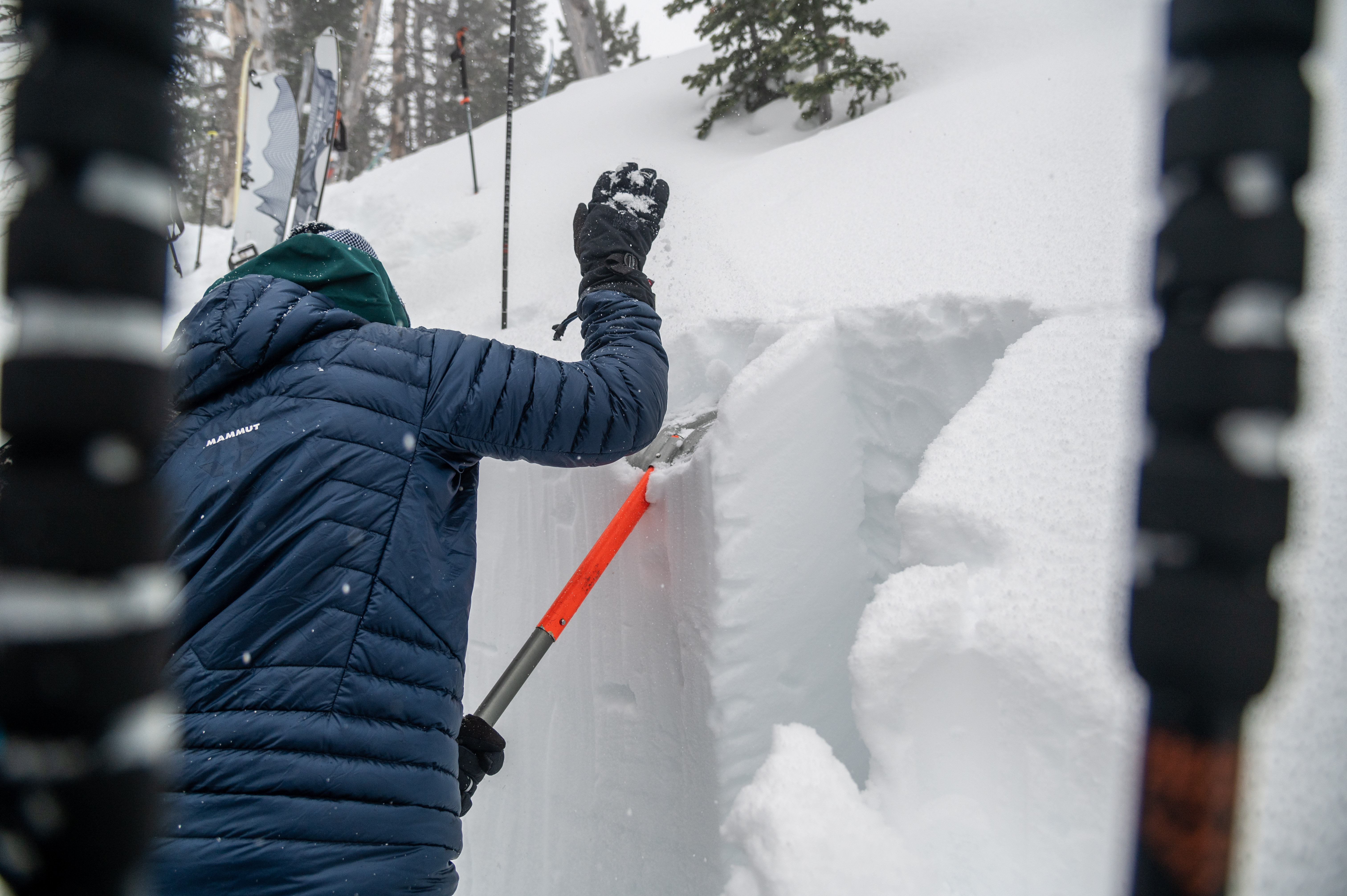
Learning from experiences and even mistakes in the mountains is also a big part of her message. She admits her risk tolerance has changed in recent years, and building that into her forecasting mindset has been somewhat challenging.
“I'm a pretty open person when talking about my own mishaps and asking for feedback on my decisions. It's hard, but I try. I think much of the mountain culture surrounding guides or forecasters lends itself to thinking that if you show yourself as fallible, your career will be judged. Mountain environments are tough teachers, and it's nice to know that there is a community (and not judgment) around experiences - as long as you're open to being vulnerable,” Antonioli says.
There’s an old adage in the avalanche world that expertise is not the same as experience, but both are closely related. For the public, though, that’s often a hard lesson to learn.
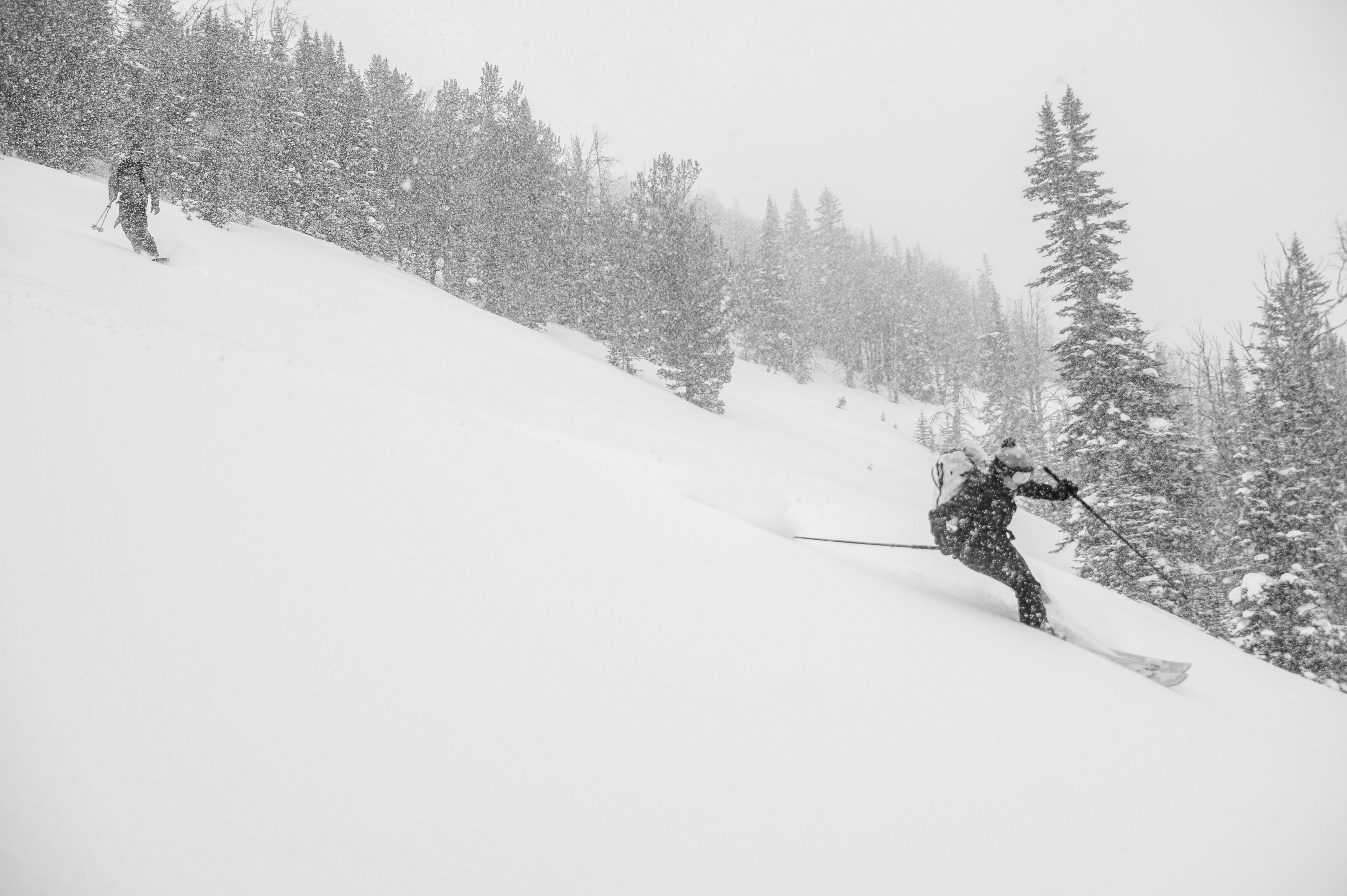
“Success does not mean expertise in the avalanche game, which is an easy thing to forget, especially with social media. The general theme is that you can ski or ride all you want, you can send the gnarliest lines, but if there isn't an actual process behind how you go about that - and you don't look for feedback from third parties and are open to both negative and positive - you are not serving yourself in the long run,” Antonioli says, “If you don't adequately reflect on your decisions and think about the "what-ifs," you are also opening yourself up to being burned by the mountain in the long run. And as a community, we do not want this to happen.”
Turning around and coming back to play another day is a huge part of the game, and one that really doesn’t get appreciated enough. In their snow pit, Antonioli and Diamond get results from their stability tests that clearly indicate instability in the snowpack. Knowing that there’s powder on safer slopes on the other side of the peak, they opt to return the way they came. Lessons learned from their day, and throughout their careers so far, are exactly what they wish to share with other backcountry users.
